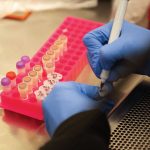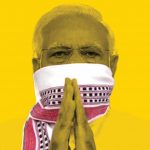Diabetes: A Bitter Truth
Overseas studies show a low-calorie diet helps in reversing diabetes. India too needs to fund domestic research to combat its biggest health scourge
/wp-content/uploads/2017/11/Diabetes1_0.jpg)
PUNE-BASED Dr Anjali Bhatt recalls a typical case: of a 37-year-old patient she wishes to call ‘Sharma’. He was obese and diabetic, like 62 million other Indians who suffer from the disease, a figure which grew 442 per cent from 1980 to 2014, according to the scientific journal The Lancet. One million Indians die every year from this health scourge, with the country contributing 7 per cent of all global cases, of which Type 2 diabetes is the largest chunk. Type 2, which is 20 times more common than other forms like childhood diabetes (Type 1), is caused by a variety of reasons: excess weight, a sedentary lifestyle, an unhealthy diet and even a family history of it.
Dr Bhatt, who works at Pune’s Chellaram Diabetes Institute, immediately realised that Sharma had to be put on multiple drugs for the rest of his life, especially because he also suffered from hypertension and high lipid levels. But then she also had other thoughts: why not convince him to reduce his calorie intake by modifying his diet? She and her colleagues had tried this very often, but faced resistance from patients. Explains Bhatt: “When we advise a low-calorie diet to our patients, the biggest challenge we face is that of ‘satiety’—in other words, the feeling of fullness after one eats. Typically, the Indian diet is very rich in carbohydrates, may it be wheat in the northern parts of India or rice in the southern parts of India.”
Luckily, Sharma complied, making it possible for doctors to put him on a low-fat, high-protein diet in which, she says, fibrous foods that are low on a “glycemic index” proved useful. According to Harvard Health Publishing, brought out by the university’s medical school, this index assigns values to foods based on how slowly or quickly those foods cause increases in blood glucose levels. Sharma lost weight with his new diet and could be taken off the high-risk category in a matter of months.
As the world braces for yet another Diabetes Day on November 14th, there are major concerns about the social and financial costs of this illness that affects more people of working age in emerging markets such as India and China than any other part of the globe. What compounds matters is the piteous state of research in these countries on the debilitating disease that doctors describe as ‘portals’ to other major lifestyle-related ailments that can cripple multiple organs, even the brain. A senior Health Ministry official based in Delhi concedes that “it is a gloomy picture as far as diabetes mellitus is concerned”. “We have a huge problem at hand and we are grossly unprepared to face it,” says the official, “Just talking about it alone won’t help. Major governmental effort is in order. Incremental measures don’t work. Huge sums will have to be put into research on the subject.”
A survey by the Chellaram Diabetes Institute in the countryside of central India says one in every 3-4 persons is identified as ‘high risk’. Doctors such as Bhatt aver that projected trends are scarier than the actual numbers. They estimate that the number of peoplewith diabetes in India is going to be 123.5 million by 2040, and experts are also worried about other types of diabetes: gestational diabetes that affects pregnant women. Diabetologists the world over are equally concerned about misdiagnosing a new variant, Type 3c, as Type 2. According to latest reports, Type 3c is caused by damage to the pancreas from inflammation of the organ or due to post-surgery complications. Each type requires specific treatment, from medications to diet modifications and exercise.
The good news, though, is that path-breaking research is taking place elsewhere, backing up common sense with scientific evidence. In this field, Dr Roy Taylor is a pioneer of sorts. He is widely credited with experiments that have shown that a low-calorie diet helps reverse diabetes, a proposition that had earlier largely been ruled out by scientists. Dr Taylor, a professor at Newcastle University, UK, is a physician with vast expertise and experience in metabolic research on diabetes. Ever since he qualified as a doctor in Edinburgh in 1976, he has been involved in practical studies of actual diabetes cases. Currently, he is the director of Newcastle Magnetic Resonance Centre. Taylor elaborates on his work: “It showed for the first time that the underlying defects of poor insulin production and insulin resistance in the liver could be entirely reversed to normal by a calorie-restricted diet.”
His subsequent work has shown that the likelihood of reversal is heavily dependent on the duration of diabetes, being excellent in the first few years and around 50 per cent by 10 years after diagnosis. Along with a team, he has described why excess fat in the pancreas causes insulin-producing cells to stop working normally, and how this can be reversed. He goes on, “So I believe that it is ground-breaking, given that most doctors thought the condition was lifelong, inevitably progressive and irreversible.”
Dr Bhatt, for her part, argues that the Indian mindset towards diabetes as a disease requiring life-long medications to all patients needs to change. She agrees that there will still be many people with diabetes who will need medications to prevent long-term complications related to diabetes, but young people with obesity and a recent onset of diabetes should be encouraged to make necessary diet changes. In India, according to the latest available figures, 46 per cent of type 2 diabetics are below 40 years old. And in a country where half the children are malnourished, according to a recent survey by Assocham and E&Y, doctors rue that a low- calorie diet is an underestimated option in managing diabetes. Practical research by Chellaram Diabetes Institute finds this to be of foremost importance to the level that diabetes can be totally managed without medications in select patients. “At the same time, one needs to understand that this is a new idea and a lot needs to be understood about complete reversal of diabetes with diet. It also goes without saying that a life-long adherence to a balanced diet is a must for continuing to have long-term results without which diabetes is likely to come back,” says Dr Bhatt.
Besides diet, exercise is also highly recommended to keep type 2 diabetes at bay. Gurgaon-based Shweta Rai Bajaj discovered that she had gestational diabetes a few years ago when she was pregnant with her daughter. It was a wake-up call for her. After delivery, she took to the gym and did a combination of yoga, weight-training and zumba to lose her pregnancy fat and to bring down her sugar levels. Hooked to the exercise regimen, she went on to become a fitness trainer herself and gave up her full-time corporate job. She highly recommends weight training besides yoga and aerobic exercises to diabetics.
That almost half of all Indians afflicted with type 2 diabetes are relatively young is an indication of all things wrong with public health in the country, says the Health Ministry official. Union Health Minister JP Nadda didn’t respond to queries on what the Government intends to do to manage the country’s diabetes burden. He has famously remained silent on myriad cases of public health hazards since assuming office.
Santosh Bhat, currently data sciences and analytics leader at mobile entertainment app Hotstar, was only 27 when he was diagnosed with type 2 diabetes during a routine medical check- up in India, shortly after he had returned from his stint in the US where he was more or less a couch potato whose usual diet included doughnuts and endless cups of coffee. Now 41, Bhat has been under heavy medication until five years ago when he took up marathon running and his wife put him on a strict low-calorie diet that is almost free of rice and wheat. “I am still on medication, but I have reduced it a lot,” says the Mumbai-based senior executive, emphasising that he runs 10 km for five days and does yoga for two days a week. He wasn’t terribly shocked when he was diagnosed with diabetes 13 years ago. “When you are that young, you don’t take things seriously. It is when you touch 35 that you start realising that long years of medication have also taken a toll on your health,” he says, adding that he now eats five meals a day. All foods are specifically selected for low glycemic index. His breakfast consists of pulses, moong dal (green gram), idlis made from non-rice ingredients and so on. At 11 am, he eats sprouts, salads; for lunch he consumes 2-3 rotis made from millets such as jowhar (sorghum), ragi (finger millet) and bajra (pearl millet). The fourth meal of the day comprises dry fruits. For dinner, he eats rotis made of non-wheat grains and mixed with jackfruit flour. “My blood sugar level under lowered medication is now normal,” Bhat says.
That almost half of all Indians afflicted with type 2 diabetes are relatively young is an indication of all things wrong with public health in the country
A LOW-CALORIE DIET, according to a pilot study by the Chellaram Diabetes Institute, is around 1,000 Kcal per day. Such a diet, it states, not only normalises blood glucose levels but possibly also reverses the pathological changes responsible for diabetes in the body. Dr Bhatt and others in her team insist that a lot of more research is in order.
Newcastle University’s Dr Taylor says there are “too many” local Indian food that are low in calories, high in fibre and still affordable. According to him, the problem with the Indian plate is that people tend to overeat rice, chapattis, etcetera. “As a guide, if a person has put on weight since their early twenties, they have become fatter than ideal and may be at risk of diabetes. Weight gain is not a sign of wealth and health; it is a sign of potential problems.”
As with low-calorie foods with low glycemic index, rich Indians and aspiring middle classes opt for ‘desirable’ foods such as oats and quinoa without caring for affordable options. These foods do alter the Indian plate from being high on carbohydrates to being rich in fibre, and therefore, help lower blood sugar levels post meals. Such a diet does wonders for those in the pre-diabetes stage, who, according to Mayo Clinic, are those with blood sugar levels higher than normal but not yet high enough to be classified type 2 diabetics. ‘Without lifestyle changes, people with pre-diabetes are very likely to progress to type 2 diabetes,’ it says in a statement. According to the website of the clinic, ‘A possible sign that you may be at risk of type 2 diabetes is darkened skin on certain parts of the body. Affected areas can include the neck, armpits, elbows, knees and knuckles.’ According to the site, classic signs and symptoms that suggest you’ve moved from pre-diabetes to type 2 diabetes include increased thirst, frequent urination, fatigue and blurred vision.
Noted Bangalore-based heart surgeon Dr Mukundan Seshadri has many diabetes patients. He suggests a strict diet, starting with excluding white rice from the plate. He advocates a diet comprising 50 per cent non-starchy vegetables, 25 per cent protein and the rest that includes everything from starchy foods to millets. As an alternative to rice, he suggests barnyard millets to diabetics and a mix of barnyard and foxtail millets to pre-diabetics. “For those who are potentially diabetic, any of the millets is fine,” he says. If someone is hooked to rice/wheat and faces the typical Indian problem of satiety, he prescribes brown rice; and wheat with additives such as soya flour or wheat bran. “Of this, 15-20 per cent should be additives,” he says. Dr Seshadri is kicked about alternative foods, too, like jackfruit flour and Chia seeds. “Once inside, Chia seeds swell up to 20 times its size and you tend to eat less,” he says. As with alcohol, he adds, the problem is the concomitant munching on fries and consumption of sodas. The surgeon lays much greater importance on one’s diet than exercise in battling diabetes.
THANKS TO SCIENTIFIC collaborations and experience, James Joseph, a former Microsoft director who is now a jackfruit evangelist, has over the past several years discovered that jackfruit flour is a far more effective and affordable indigenous alternative to relatively expensive imported foods like oats and quinoa and similar products. In a country like India where the consumption of fruit and vegetables is the lowest in the world despite being one of their major producers, Joseph feels it is important to tap resources within the country to combat the spike in diabetes.
He began to tie up with institutes in April 2014 to find that green jackfruit is at least 40 per cent lower in carbohydrates, 40 per cent less in calories and 100 per cent more in fibre than rice or roti. It was around this time he came across a study in the Ceylon Medical Journal confirming lower glycemic values for the green jackfruit meal.
As luck would have it, the late Dr APJ Abdul Kalam came across his book titled ‘God’s Own Office’ —Joseph’s office in Aluva is also has the same name—and the former President invited him to a meeting where he shared the data he had gathered about green jackfruit. Kalam told him, “This is pure science; a high-fibre meal always translates to low absorption of sugar. However what is new here is that it is possible to eat an unripe fruit as a meal.” Due to high acidity, most fruits cannot be consumed in quantity at an unripe stage.
Within another eventful year, Joseph, with the help of scientists, developed a prototype flour from green jackfruit which has a binding factor between rice flour and wheat flour and can replace one third of almost all dishes prepared with wheat flour, rice flour or batter, without any change in taste or texture. “In addition to lower calories and lower carbs, we could achieve higher soluble fibre than oats,” Joseph adds.
By the end of 2015, Joseph, a qualified engineer, secured funding for his project and within months completed a glycemic study at the world’s best in GI study, Sydney University Glycemic Index Services (SUGiRS), and proved that his product—jackfruit flour—had half glycemic load compared with rice or rotis. In June 2016, he and his team of engineers developed a continuous process machine from whole jackfruit to flour to reduce processing cost significantly. This June, he launched his product, green jackfruit flour, which is now available through online orders and at Spar Supermarkets, Amazon, Big Basket, among others.
As regards other typical low-calorie, high-fibre foods that are competition to jackfruit flour in terms of affordability, he says that all green fruits and vegetables (except starch roots) which can replace rice or wheat as a main meal are all affordable options in rural India. “Our problem is over-consumption of starchy grains and roots and lack of consumption of vegetables and fruits. Greens have become less affordable than refined grains, especially for the urban poor,” he points out.
The Health Ministry official, meanwhile, contends that various experts have pointed out the need for comprehensive, localised studies on diabetes in India because the incidence of diabetes varies according to regions. He quotes a report titled ‘The current state of diabetes mellitus in India’ by Seema Abhijeet Kaveeshwar and Jon Cornwall. The authors state, ‘…despite the incidence of diabetes within India, there are no nationwide and few multi-centric studies conducted on the prevalence of diabetes and its complications. The studies that have been undertaken are also prone to potential error as the heterogeneity of the Indian population with respect to culture, ethnicity and socio-economic conditions, mean that the extrapolation of regional results may give inaccurate estimates for the whole country.’
“Like jackfruit flour that people talk about these days, we could even tap our herbal wealth from across the country to find affordable substitutes to unaffordable low-calorie foods to combat the menace of diabetes,” he asserts.
As the former director general of Indian Council of Medical Research (ICMR), Dr Soumya Swaminathan herself had raised concerns about the burden of the disease on India that could potentially blunt our demographic advantage. As Deputy Director General of Programmes at the World Health Organization, it is time she puts her ideas into action.
Ancient Indian physician Sushruta and surgeon Charaka had first identified two types of diseases characterised by madhumeha (honey urine) which attracted ants—later called type 1 and type 2 diabetes. Considering the knowledge of this ailment has been around for thousands of years, what is playing out in India today is sheer irony.

/wp-content/uploads/2025/01/Cover_Kumbh.jpg)















More Columns
The lament of a blue-suited social media platform Chindu Sreedharan
Pixxel launches India’s first private commercial satellite constellation V Shoba
What does the launch of a new political party with radical background mean for Punjab? Rahul Pandita